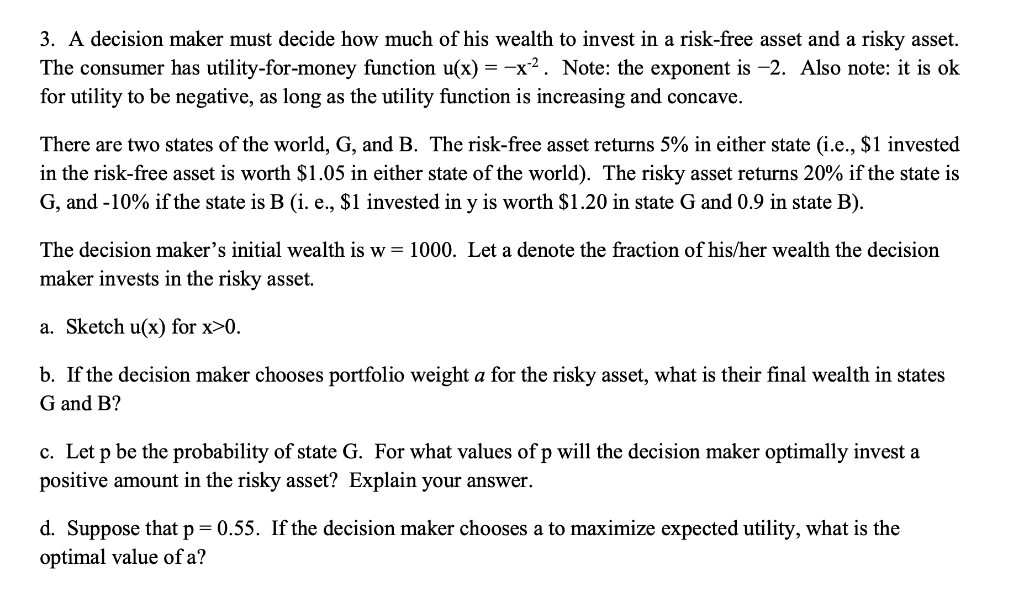
3. A decision maker must decide how much of his wealth to invest in a risk-free asset and a risky asset. The consumer has utility-for-money function u(x) = -x. Note: the exponent is 2. Also note: it is ok for utility to be negative, as long as the utility function is increasing and concave. There are two states of the world, G, and B. The risk-free asset returns 5% in either state (i.e., $1 invested in the risk-free asset is worth $1.05 in either state of the world). The risky asset returns 20% if the state is G, and -10% if the state is B (i. e., $1 invested in y is worth $1.20 in state G and 0.9 in state B). The decision maker's initial wealth is w= 1000. Let a denote the fraction of his/her wealth the decision maker invests in the risky asset. a. Sketch u(x) for x>0. b. If the decision maker chooses portfolio weight a for the risky asset, what is their final wealth in states G and B? c. Let p be the probability of state G. For what values of p will the decision maker optimally invest a positive amount in the risky asset? Explain your answer. = d. Suppose that p=0.55. If the decision maker chooses a to maximize expected utility, what is the optimal value of a? 3. A decision maker must decide how much of his wealth to invest in a risk-free asset and a risky asset. The consumer has utility-for-money function u(x) = -x. Note: the exponent is 2. Also note: it is ok for utility to be negative, as long as the utility function is increasing and concave. There are two states of the world, G, and B. The risk-free asset returns 5% in either state (i.e., $1 invested in the risk-free asset is worth $1.05 in either state of the world). The risky asset returns 20% if the state is G, and -10% if the state is B (i. e., $1 invested in y is worth $1.20 in state G and 0.9 in state B). The decision maker's initial wealth is w= 1000. Let a denote the fraction of his/her wealth the decision maker invests in the risky asset. a. Sketch u(x) for x>0. b. If the decision maker chooses portfolio weight a for the risky asset, what is their final wealth in states G and B? c. Let p be the probability of state G. For what values of p will the decision maker optimally invest a positive amount in the risky asset? Explain your answer. = d. Suppose that p=0.55. If the decision maker chooses a to maximize expected utility, what is the optimal value of a







